The Next 25 Years
This article is part of a series commemorating APS’s 25th anniversary in 2013.
In winding up this year-long series, the Observer contacted several APS Rising Stars from the past few years and asked them to provide forecasts on the different directions that psychological and integrative research will take over the next quarter century. Here’s what they hope to see by the time APS celebrates its 50th anniversary.
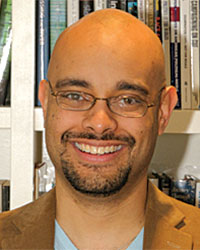 Phillip Atiba Goff
Phillip Atiba Goff
Assistant professor, social psychology
University of California, Los Angeles
Executive Director of Research, Consortium for Police Leadership in Equity
My hope and expectation for the field is that we will become a more welcoming place for interdisciplinary and translational research. Social psychological principles are essential to understanding the experiences of vulnerable populations, and as the discipline evolves, I expect that demonstrating our importance in the actual contexts that affect people will become increasingly valued both by policy experts and by basic psychological scientists. In part, I expect this because of the overwhelming success behavioral economics enjoys in policy areas such as health care and finance. Their work has demonstrated the influence that social psychological principles can play on major social concerns — though it has rarely been used in the intergroup domain, leaving the door open for social psychologists.
I also expect that, because understanding the intergroup contexts of actual groups is so vital to understanding the boundary conditions of basic intergroup psychology, an increasing number of scholars will attempt to “look to the world” as they build on previous theories. This will reward researchers that focus on studying contexts and do so from multiple methodological angles.
 Iris-Tatjana Kolassa
Iris-Tatjana Kolassa
Head of clinical and biological psychology
University of Ulm, Germany
We will have a much deeper knowledge about the molecular processes involved in the etiology and symptomatology of psychiatric disorders. While the last decades were the decades of the brain and functional brain imaging, I believe that the next decades will be the decades of the “omics” sciences. A better understanding of the body’s molecular processes will lead to new approaches for pharmaceutical treatments of psychiatric disorders. Furthermore, it will presumably revolutionize our diagnostic criteria of psychiatric disorders.
Current research suggests that stress accelerates physical aging on various levels, with consequences such as the premature onset of age-related diseases. With this relationship in mind, we need to put much more energy in the prevention and treatment of trauma- and stress-related disorders to prevent secondary physical disorders that lead to high societal costs. I hope that psychological research will have shown by then how important it is to take psychic processes seriously and to be highly active in the prevention of stressors (such as maltreatment during childhood) but also the timely and highly qualified treatment of these disorders. I also hope that we will have a better understanding of disorders like schizophrenia, bipolar disorder, and Alzheimer’s disease.
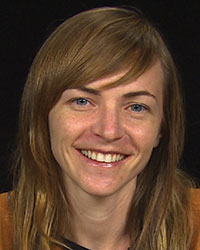 June Gruber
June Gruber
Assistant professor of psychology
Director, Positive Emotion and Psychopathology Laboratory
Yale University
In a field as central and wide reaching as affective science, there are many promising directions on the horizon. My prediction is that the next 25 years will witness expansion in at least four key domains. First, balancing the good and the bad of both positive and negative emotions will be critical to a comprehensive understanding of emotion and its optimal function, as well as situating how context and when timing come into play.
Secondly, moving from the ivory tower to the trenches will become increasingly essential as we transform scientific discoveries into real-world applications, such as developing refined clinical models of psychopathology and its treatment or early preventative efforts to manage emotions early in children and classrooms.
Third, moving online to study emotional expression and interaction in digital form will becoming increasingly important as social media continues to permeate our everyday communications and social interactions.
Finally, given affective science is a rich field spanning a wide variety of interests, building bridges across fields like neuroscience, genetics, and public policy will become increasingly important. So will crossing levels of analysis from micro-level measurements of gene expression and immune system markers up to macro-level foci on how emotion and its regulation can build a better world and reduce intergroup conflict. It’s been a good 25 years for affective science, and it’s likely to continue to get better all the time as we look ahead.
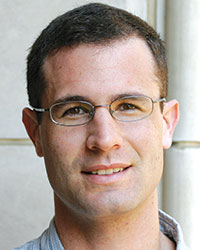 Alan Castel
Alan Castel
Associate professor of psychology
Memory & Lifespan Cognition Lab
University of California, Los Angeles
Looking back into the past may also provide a glimpse of what future growth there will be in memory and cognitive aging research. For example, research on cognitive aging often relies on the convenience of cross-sectional studies of a highly select sample, but that has been changing over the last few decades. It will likely change even more, as we can use technology to efficiently track and test people over the Internet and use more sophisticated devices to collect data. Brain imaging technology might be more mobile and convenient, and we can test memory in natural environments by using remote data-acquisition techniques.
Technology now plays a major role in how we use (and often don’t use) our own memory. We already “out-source” our memory demands to calendars, reference guides, and other applications on computers and phones. This has important implications for younger students and older adults. Future research will likely examine how people choose what to remember, and also how they decide to remember it (either personally, or digitally). We will also make better contact with how theory can be applied in a realistic context that can capitalize on what types of things older adults can and need to remember (such as focusing on remembering important health and medication information). Research might also develop better ways to improve memory through proper nutrition, goals and mindset, and physical and mental exercise. Hopefully, we will have stronger evidence on the “use it or lose it” debate, perhaps with a set of evidence-based guidelines akin to what we can provide for nutrition and exercise
With a larger older adult population in 25 years, we will hopefully value and empower older adults as people who can provide unique guidance, insight, and wisdom. A great deal of prior research has documented how aging can lead to impairments in a variety of cognitive tasks. We are now developing a more complete picture regarding what is impaired, and what is not only spared but perhaps enhanced with age. By thinking about how older adults can be productive citizens, we can better appreciate how and why they make unique and meaningful contributions. In a sense, healthy older adults may be an emerging natural resource.
 Kristen Lindquist
Kristen Lindquist
Assistant professor of psychology
University of North Carolina School of Medicine
We still have so much to learn about emotion. In the next 25 years, we will make great strides in understanding the biological basis of emotions. Growing technology is allowing us to learn more and more about the neural, hormonal, and even genetic and epigenetic basis of emotion. We will also continue to learn a lot more about the role of psychological processes in emotion over the course of the next 25 years. We are just beginning to understand how a person’s expectations, knowledge, and prior experiences shape his or her emotions. Emotions play a role in every moment of waking life from decisions to memories to feelings, so understanding emotions will help us to understand the mind more generally.
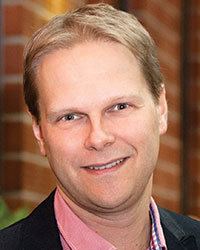 Lauri Nummenmaa
Lauri Nummenmaa
Assistant professor, Department of Biomedical Engineering and Computational Science
Aalto University, Finland
Now that we are beginning to grasp the fundamentals of brain function and neural underpinnings of the basic cognitive, social, and affective processes, we are ready to move back towards studying human behavior. In my view, the most limiting factor of current experimental psychology is that much of it does not translate well to the way humans behave in the real world. Consequently, a major aim of the future psychological science would involve re-establishing the link between the brain and behavior.
Even though well-controlled laboratory experiments are critical for unraveling the delicate circuits supporting affect and cognition, these approaches sometimes detach the brain from its natural and interactive operational environment. Obviously studying the social and emotional brain in “real world” will require a quantum leap from the methods department, but recent developments show that when we really push the limits of our technology and methodological wits, we can move towards real-world cognitive and affective neuroscience and unravel how the brain interacts with its natural environment.
Finally, the way we think about studying human social behavior is undergoing a major change. Currently our experimental paradigms excel in studying “passive” social cognition such as neural encoding of social stimuli, but what about the real interactive nature of human social cognition? We are rarely observing others passively and in isolation, but we literally hook our brains up with others when, for example, exchanging thoughts or playing in a band together. But do our brains really function similarly when we are receiving information passively in the laboratory, rather than when exchanging information back and forth between other individuals? I really don’t believe so. To really understand social cognition we should move towards studying human brains in interaction rather than in isolation. This approach will require us to rethink the basic analytic units of our experiments: Instead of studying single individuals, we need to move towards studying social interaction in dyads or larger groups. This will obviously make our work twice as complicated as it was before, but as scientists I think we should eagerly accept this challenge to again push the limits of our understanding
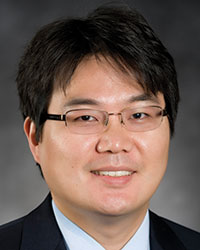 In-Sue Oh
In-Sue Oh
Associate professor, human resource management
Temple University
Over the next 25 years, there will be more studies that jointly consider the effects of personal and situational characteristics using multi-level research design. In particular, more researchers will examine the cross-level influences of situational characteristics such as national culture and organizational climate on employee attitudes and behaviors, while taking into account employee personal characteristics. In addition, we will see more studies that predict group and organizational performance.
We will see more cross-cultural research, particularly comparing North America and East Asia (e.g., China) given that more and more North American companies will be operating in East Asia, and China’s economic and trading power will expand. This will require North American industrial/organizational scholars and practitioners to better understand the cross-cultural differences in employee attitudes and behaviors.
More meta-analyses will be published over the next 25 years, and thus we will feel a great need for synthesizing multiple meta-analyses on a similar topic; that is, we will see more second order meta-analyses (meta-analysis of meta-analyses).
In measuring individual differences such as cognitive ability, personality, values, and emotions, we will rely less on self-reports, but more on objective, difficult-to-fake measures such as brain images (e.g., fMRI) and physiological responses. This will greatly advance research on staffing, stress, and other relevant areas.
 Modupe Akinola
Modupe Akinola
Assistant professor, management
Columbia Business School
Today, over half of Americans report experiencing stress at levels higher than they think is healthy. Moreover, few individuals feel they have the resources to cope and manage the stress in their daily lives. Over the next 25 years, I would like to see more research highlighting a nuanced perspective on stress that takes into consideration that some stress can actually be good for you. This research would offer evidence supporting the ways in which stress can positively influence the biological processes implicated in physical recovery and immunity, fueling psychological thriving and enhancing health and performance. I especially hope to see more of this research in organizational settings, where increasing workloads and demands have begun to stifle productivity. This research would entail working in concert with organizations to devise interventions and modify practices that will help individuals better manage the stressors and tensions that are present in organizational environments. I hope that researchers will delve deeper into the myriad contexts within organizations that can generate stress, be they differences in socioeconomic status among employees, cross-race and asymmetrical relationships, gender disparities, or power dynamics. By broadening the lens through which stress is examined, this research will take into account the growing demographic diversity within organizations and offer more inclusive stress management interventions.
Finally, I hope that advancements in technology will allow for more unobtrusive ways of measuring bodily responses to stress that will offer real time information on stress levels and will teach individuals how to better modulate their responses to stress in the moment. Imagine capitalizing on the big data revolution and nanotechnology, which will evolve in unimaginable ways, and collecting data that allows you to track and quickly analyze your cardiovascular and hormonal reactions to stress, showing you exactly when and under what contexts your mind and body are functioning at an optimal or suboptimal level. My hope is that this kind of research will result in a society that is not only healthier, but also happier and more productive.
 Tal Yarkoni
Tal Yarkoni
Director, Psychoinformatics Lab
Department of Psychology
University of Texas at Austin
What will our field look like in 25 years? Let’s start with data collection. Our data collection methods in 2038 will probably build on the smartphone revolution of the 2010s. Instead of a heterogeneous collection of thousands of individual apps, I imagine we’ll see some standardization in the field, so that a few major apps or data collection frameworks dominate, and individual researchers reserve or buy time to collect the data and ask the questions they’re particularly interested in. The data collected using such methods — from millions of people, not thousands — will be, for the most part, openly available to anyone who wants them. And given shifting societal norms of privacy and confidentiality, it’s not unlikely that datasets will include not just self-report questions and reaction times, but also information that today we still consider (barely) private: GPS logs, social contacts, and even whole-genome scans.
The scale of “Big Data” that psychologists have available will provide exciting new research opportunities, but it will also pose new challenges. Current hardware and computing infrastructure won’t be sufficient to handle terabytes or petabytes of data; for that, we’ll have to follow the lead of industry and the natural sciences in adopting massively distributed computing platforms. The statistical tools psychologists commonly use right now — t-tests, ANOVAs, and multiple regression — won’t do the job either. Instead, many areas of psychology will experience the wholesale shift towards the machine learning paradigm that’s already well underway in many other sciences. In theoretical domains, psychologists may need to reframe many of the questions we are currently asking. For example, instead of asking “is there an effect?” of a particular manipulation, we’ll be testing models that can quantify effect sizes under a range of potential contexts, and automatically suggest boundary conditions and moderators. In applied domains, the machine learning revolution will have even more dramatic consequences. Educational psychologists and clinical psychologists will be able to select effective treatments in a data-driven way, with enormous models using thousands or tens of thousands of predictors to generate diagnostic labels and identify optimal interventions. The traditional “why” questions may be some of the first casualties of this approach: patients with mental health disorders and parents of students with learning disabilities won’t care very much why treatments work, they’ll just be happy that they do work.
When it comes to reporting and evaluating our findings, we’ll also be doing that quite differently. As post-publication evaluation platforms proliferate and popularize (witness the recent success of PubPeer and PubMed Commons), traditional peer-reviewed journals are likely to slowly disappear. No longer will we need the seal of approval of two or three anonymous referees; instead, we’ll simply post our work as soon as we feel it’s ready, and the entire community will collectively participate in its iterative evaluation. Science will proceed much more rapidly, with individual and communal incentives aligned much more closely. Open sharing of data will be the norm; researchers will automatically get credit when their data are re-used. New filtering techniques and recommendation engines will connect relevant works together while we sleep. Everything will be a citable product — a traditional paper, a piece of software, a single figure. New metrics will harness this information to produce more reliable indicators of quality and influence at every level: articles, researchers, institutions, and even disciplines.
We will still have disease, famine and war, of course; and psychological science still won’t be very much farther along in understanding how the mind and brain work — because those are very big problems. But on a day-to-day basis, psychological scientists will have better data, better tools, and more reliable methods of aggregation and evaluation.
Tal Yarkoni will speak at the 2014 APS Annual Convention, to be held May 22–25 in San Francisco, CA, USA.
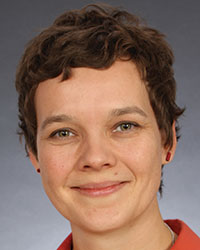 Susanne Scheibe
Susanne Scheibe
Associate professor, Organizational psychology
University of Groningen, The Netherlands
The process of emotion regulation in all its many facets (including emotional goals, preferences, strategy use, strategy implementation, cognitive costs) has taken center stage in explaining positive trajectories of emotional aging. I believe and hope the next steps will be to improve our understanding of “contexts and consequences” of emotion regulation across adulthood. With context, I mean the situational personal boundary conditions of emotion-regulation outcomes. Interesting propositions have been made recently by researchers in emotional aging and neighboring fields that emotion regulation outcomes and age differences therein may depend on the timing and nature of affective events. Different situational contexts and life stages may call for different regulatory strategies to maintain or regain well-being. Regulatory flexibility is an exciting new concept highlighting the need to adjust emotional goals and strategies to changing environmental demands and personal resources; these ideas now await testing.
Additionally, I hope we will increasingly look beyond older adults’ emotional well-being as the primary outcome we seek to explain, and towards the downstream consequences for goal pursuit, performance, and other relevant outcomes. In my own research I have started to explore the ramifications of emotional aging for work-related functioning. A longstanding assumption in lifespan theory is that gains and costs must be expected as a result of any developmental change. In work contexts, enhanced emotional functioning with age and the priority given to well-being may often enhance older adults’ performance, but may at other times get in the way of successful goal pursuit and performance. Over 25 years, I hope we will have developed comprehensive accounts of such context effects and performance consequences of emotion regulation across adulthood.
Perspectives Looks Back, Looks Ahead
In recognition of the 25th anniversary of APS, the latest issue of Perspectives on Psychological Science continues its series of special sections on how the field has changed over the last 25 years. The special section in the November issue of the journal includes articles that explore a wide range of topics, including
- integrative approaches to understanding the brain under stress;
- the science of subjective well-being (SWB);
- the burgeoning field of social neuroscience;
- advances in research on autism and dyslexia;
- psychological perspectives on cardiovascular diseases;
- the challenge of examining health disparities; and
- the development of parent-training programs.
APS Fellows serve as sole or lead authors on the articles, and discuss and recommend emerging directions for science:
- William James Fellow Ed Diener, University of Illinois at Urbana-Champaign, writes about SWB research moving beyond the individual to the national and international levels, with researchers examining differences in SWB across various societies and cultures.
- APS Past President John T. Cacioppo and Stephanie Cacioppo of the University of Chicago cite an increasing integration of diverse disciplines and perspectives into the field of social neuroscience.
- William James Fellow Uta Frith, University College London, calls for an increased empirical focus on the brain’s processing of social stimuli, and on how that process contributes to the development and maintenance of autism and dyslexia.
- William James Fellow Bruce S. McEwen, Rockefeller University, projects studies examining ways brain function can be altered in the aftermath of stress exposure and adversity.
- James McKeen Cattell Fellow Karen A. Matthews, University of Pittsburgh, discusses how early research on psychological influences on the development of cardiovascular disease has led to the growth of multilevel modeling and a life-span approach to understand how psychological constructs relate to disease outcomes.
- James McKeen Cattell Fellow Nancy Adler cites a need for new interventions and policies to remedy the ways in which inequality damages health.
- APS Fellow Marion S. Forgatch and James McKeen Cattell Fellow Gerald R. Patterson of the Oregon Social Learning Center, along with Abigail Gewirtz, University of Minnesota, recommend ways to widely implement parent-training programs.
Read the November issue of Perspectives on Psychological Science.





APS regularly opens certain online articles for discussion on our website. Effective February 2021, you must be a logged-in APS member to post comments. By posting a comment, you agree to our Community Guidelines and the display of your profile information, including your name and affiliation. Any opinions, findings, conclusions, or recommendations present in article comments are those of the writers and do not necessarily reflect the views of APS or the article’s author. For more information, please see our Community Guidelines.
Please login with your APS account to comment.